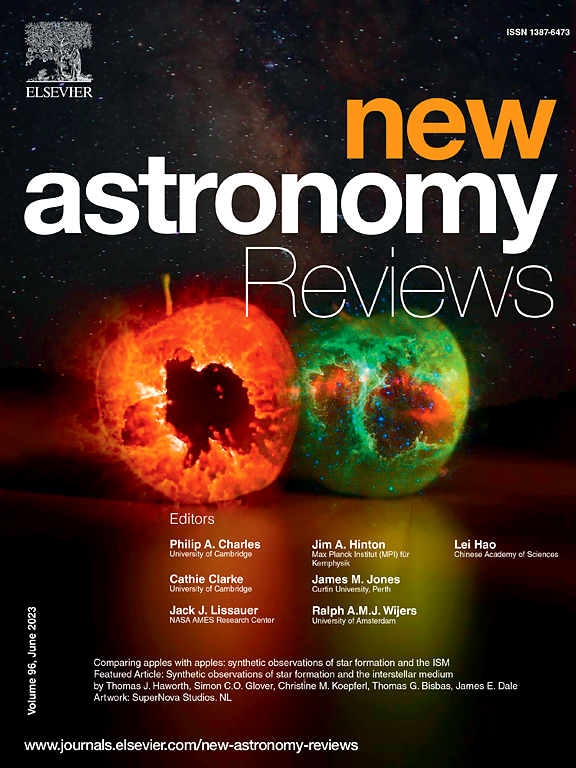Exploring Titan’s subsurface: Insights from Cassini RADAR and prospects for future investigations
IF 26.8
2区 物理与天体物理
Q1 ASTRONOMY & ASTROPHYSICS
引用次数: 0
Abstract
Although the Ku-band Cassini RADAR was not primarily designed to probe Titan’s subsurface structure, it unexpectedly provided valuable data on penetration, notably measuring the depth and dielectric properties of several lakes or seas in altimetry mode. While the RADAR did not possess the same penetration capability as the radar instruments that are used to search for water on Mars, its detection results and potential still warrant comprehensive integration and summary. This paper reviews the latest research findings on Titan’s subsurface observations, encompassing liquid bodies and dunes, grounded on RADAR’s penetration performance and principles. In consideration of the Dragonfly mission and its scientific goals, the paper reviews the distribution of water ice on Titan. The upcoming observations hold promise for investigating relevant features at low latitudes, such as impact craters with exposed ice-rich material. Finally, suggestions and prospects for future subsurface radar exploration of Titan are presented. The exploration of subsurface structures on Titan remains a captivating field of study, bearing significant implications for planetary science and astrobiology.
探索土卫六的地下:卡西尼雷达的洞察力和未来调查的前景
虽然卡西尼号 Ku 波段雷达的主要设计目的不是探测土卫六的地表下结构,但它意外地提供了有价值的穿透数据,特别是在测高模式下测量了几个湖泊或海洋的深度和介电性质。虽然雷达不具备与用于在火星上寻找水的雷达仪器相同的穿透能力,但其探测结果和潜力仍然值得全面整合和总结。本文以雷达的穿透性能和原理为基础,回顾了土卫六地表下观测的最新研究成果,包括液态体和沙丘。考虑到 "蜻蜓 "任务及其科学目标,本文回顾了土卫六上水冰的分布情况。即将进行的观测有望调查低纬度地区的相关特征,如富含冰物质的撞击坑。最后,介绍了对未来土卫六地表下雷达探测的建议和展望。对土卫六地表下结构的探索仍然是一个引人入胜的研究领域,对行星科学和天体生物学具有重大意义。
本文章由计算机程序翻译,如有差异,请以英文原文为准。
求助全文
约1分钟内获得全文
求助全文
来源期刊

New Astronomy Reviews
地学天文-天文与天体物理
CiteScore
18.60
自引率
1.70%
发文量
7
审稿时长
11.3 weeks
期刊介绍:
New Astronomy Reviews publishes review articles in all fields of astronomy and astrophysics: theoretical, observational and instrumental. This international review journal is written for a broad audience of professional astronomers and astrophysicists.
The journal covers solar physics, planetary systems, stellar, galactic and extra-galactic astronomy and astrophysics, as well as cosmology. New Astronomy Reviews is also open for proposals covering interdisciplinary and emerging topics such as astrobiology, astroparticle physics, and astrochemistry.
 求助内容:
求助内容: 应助结果提醒方式:
应助结果提醒方式:


